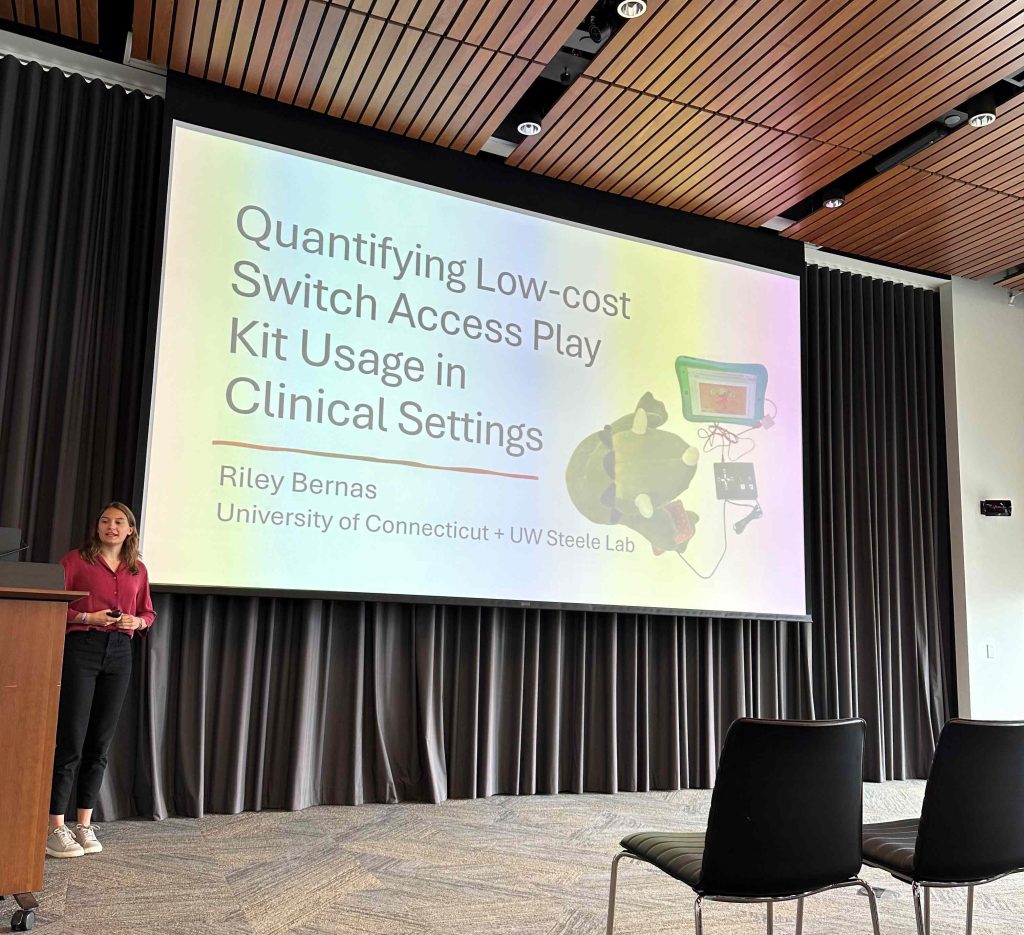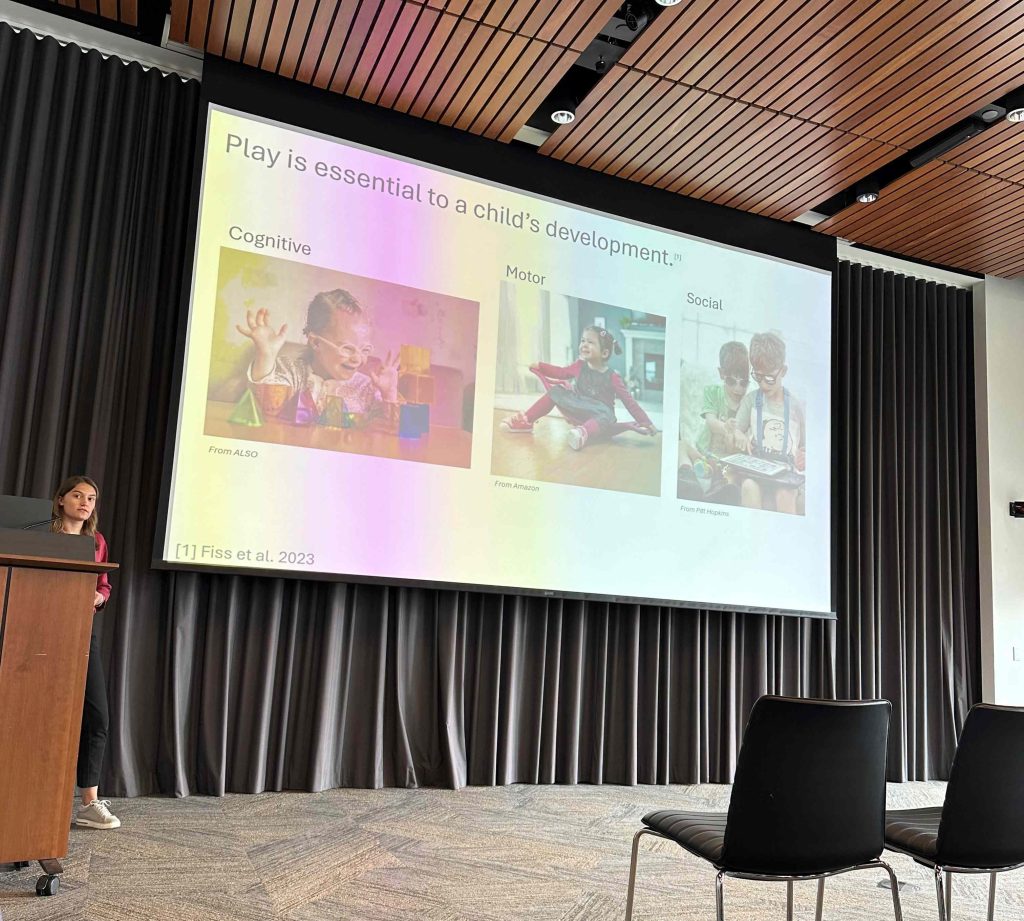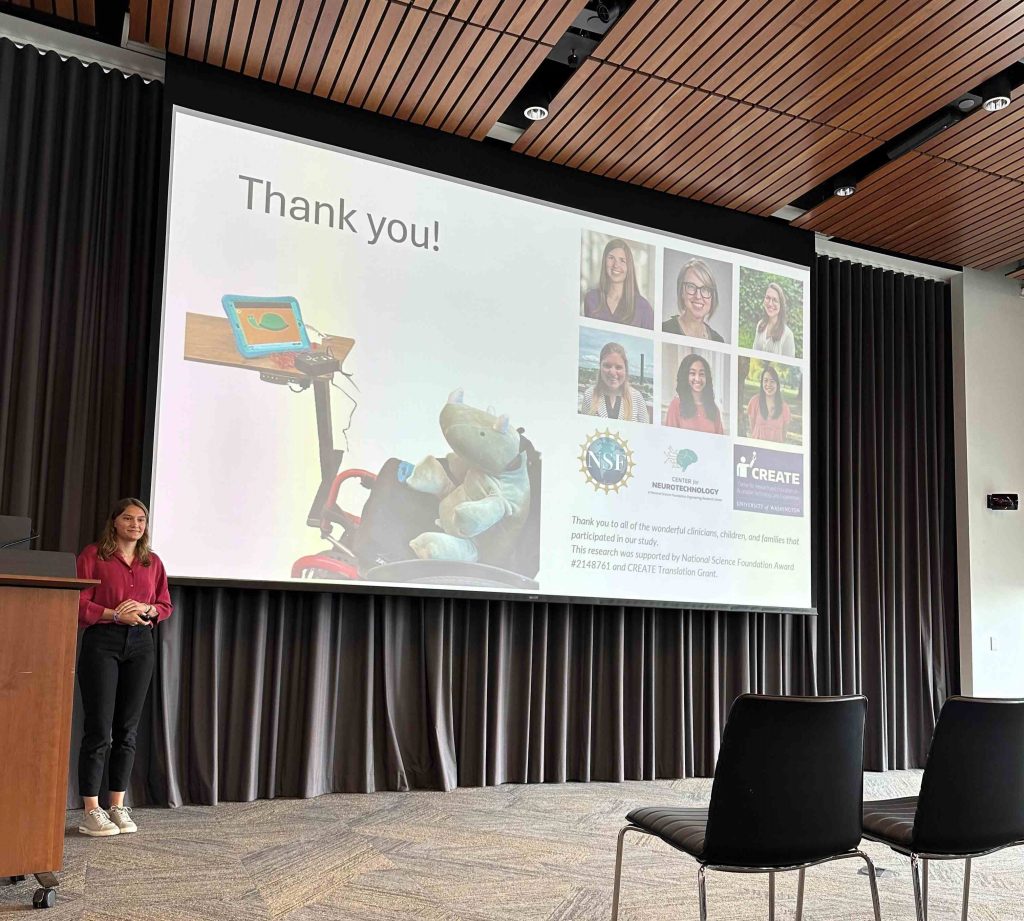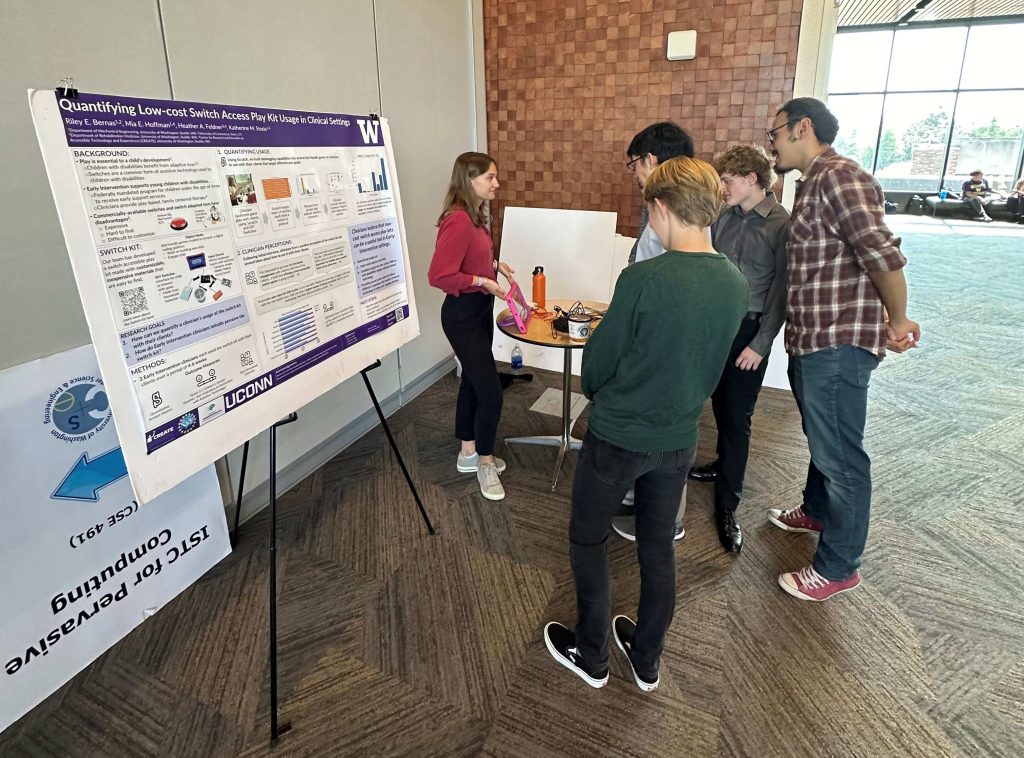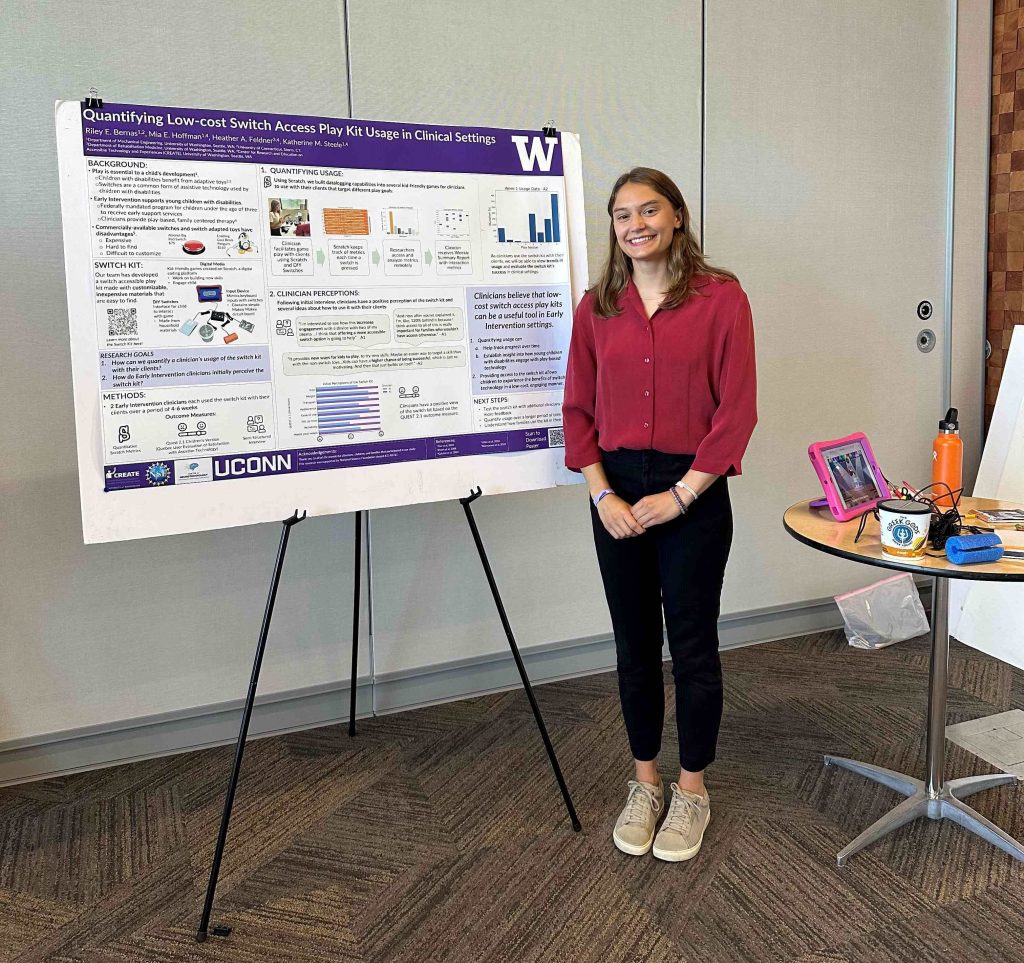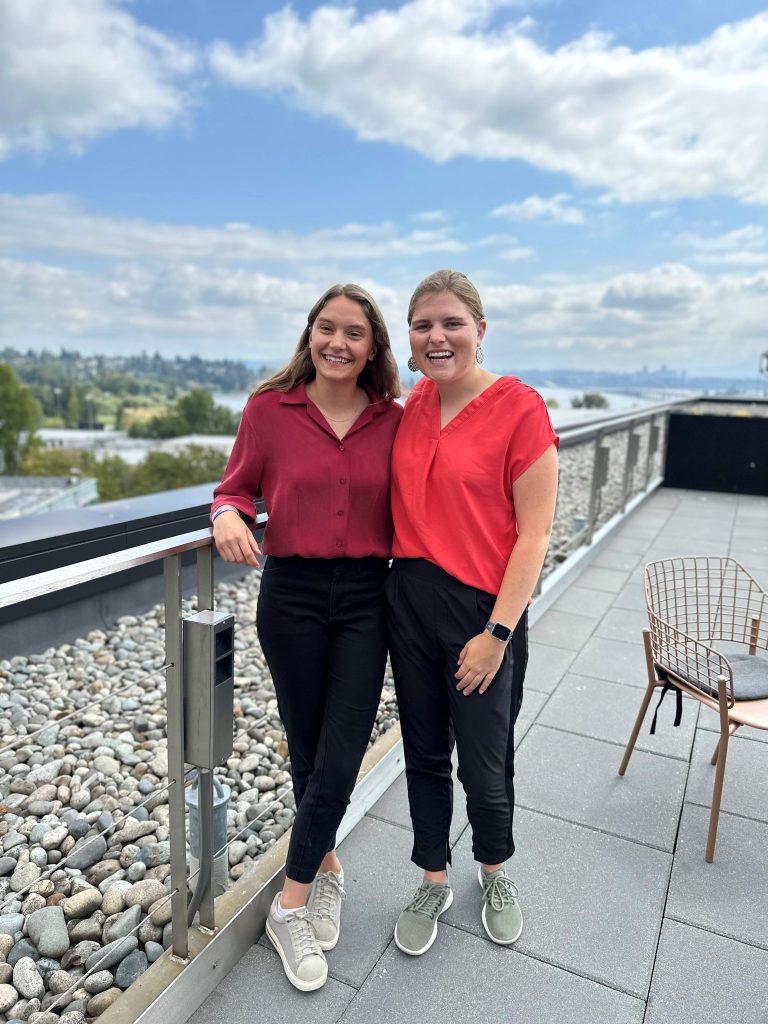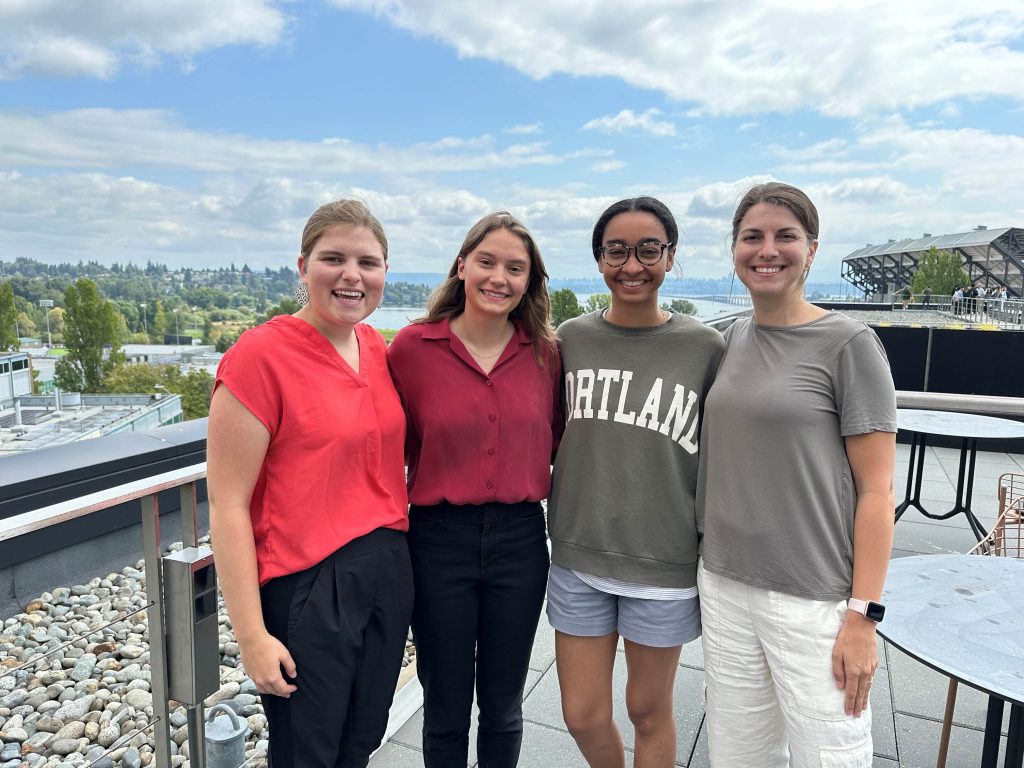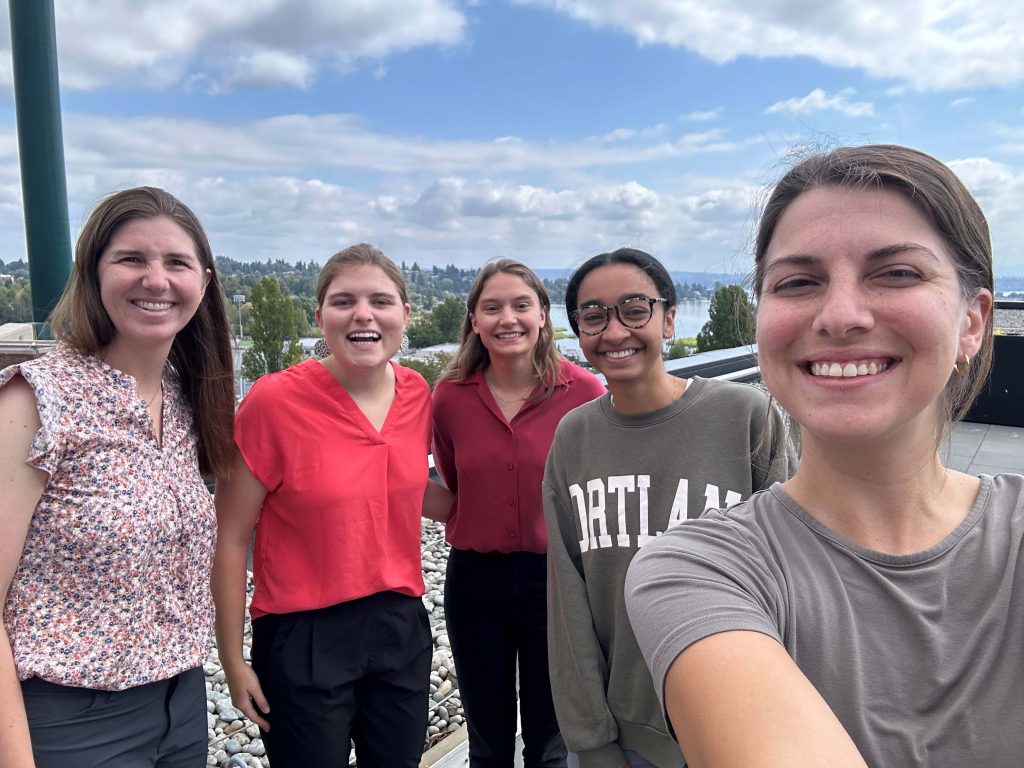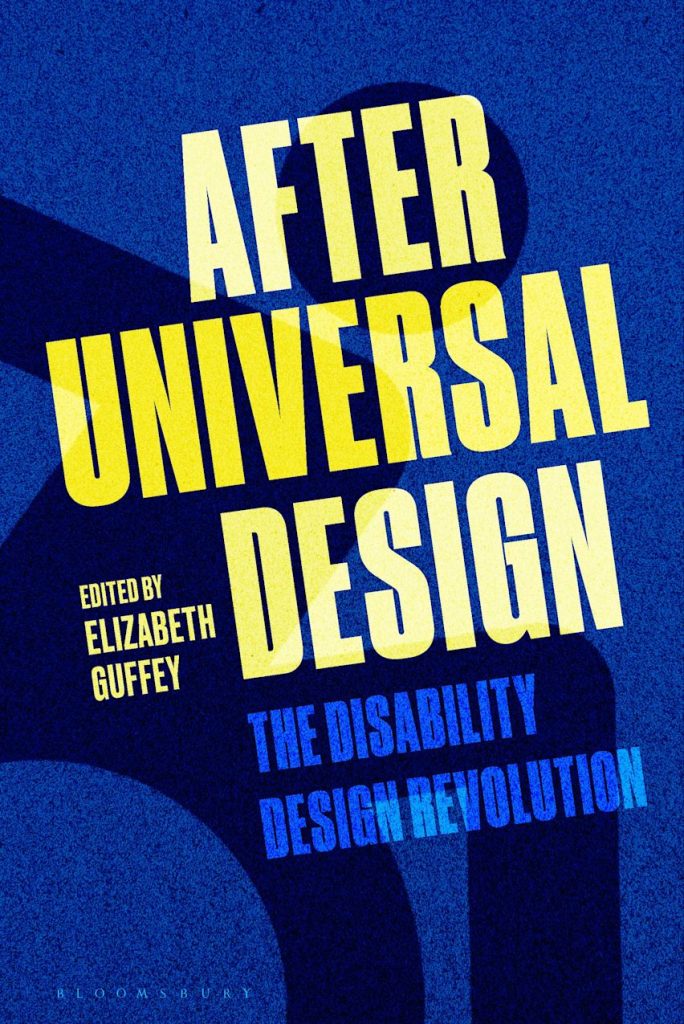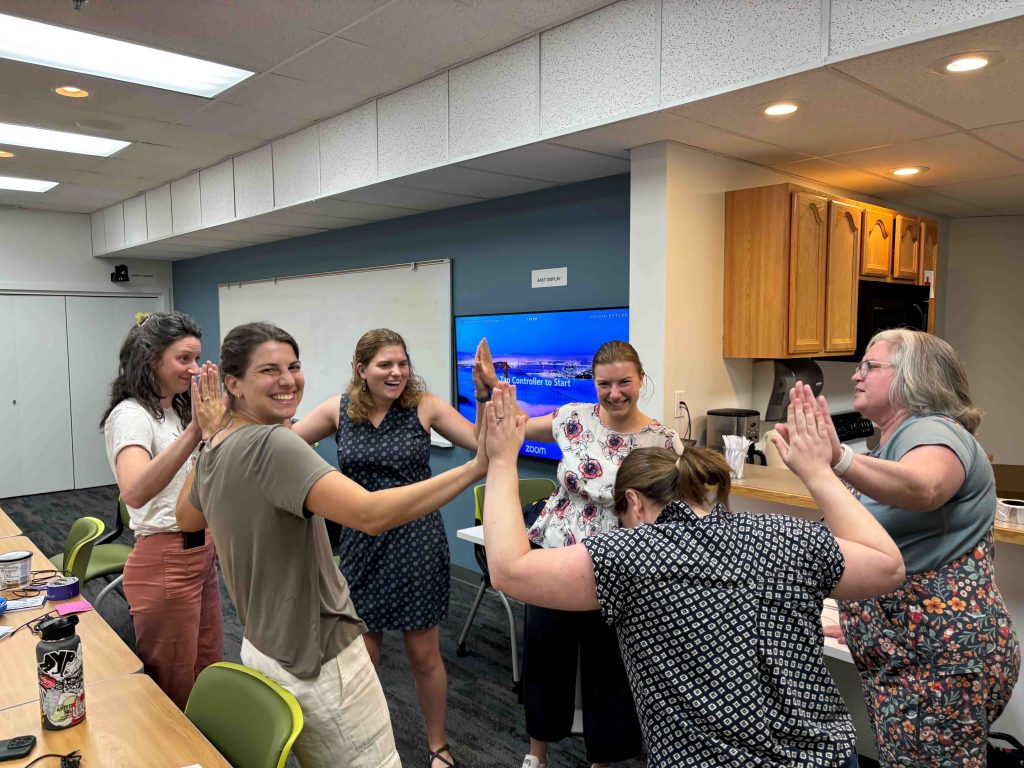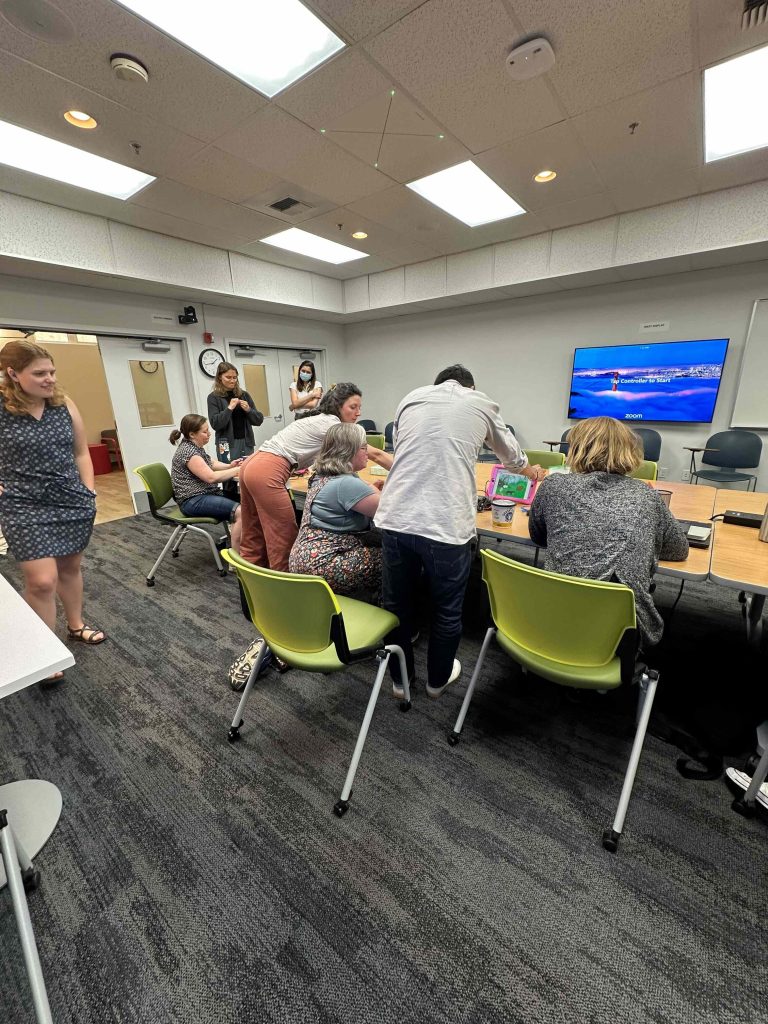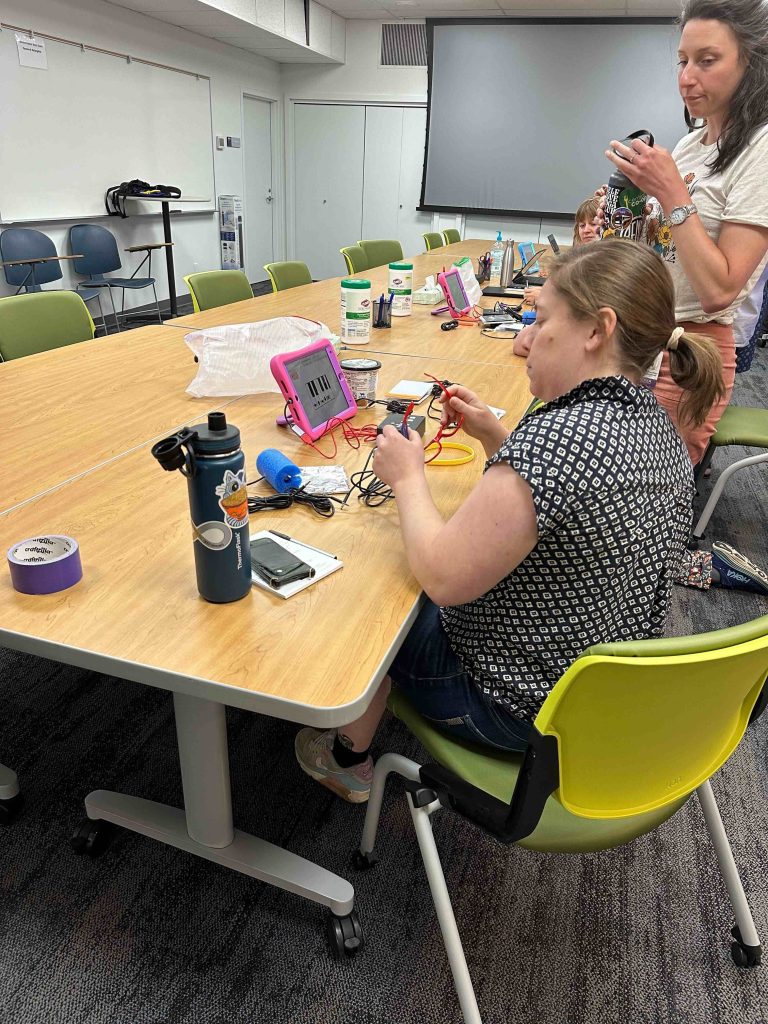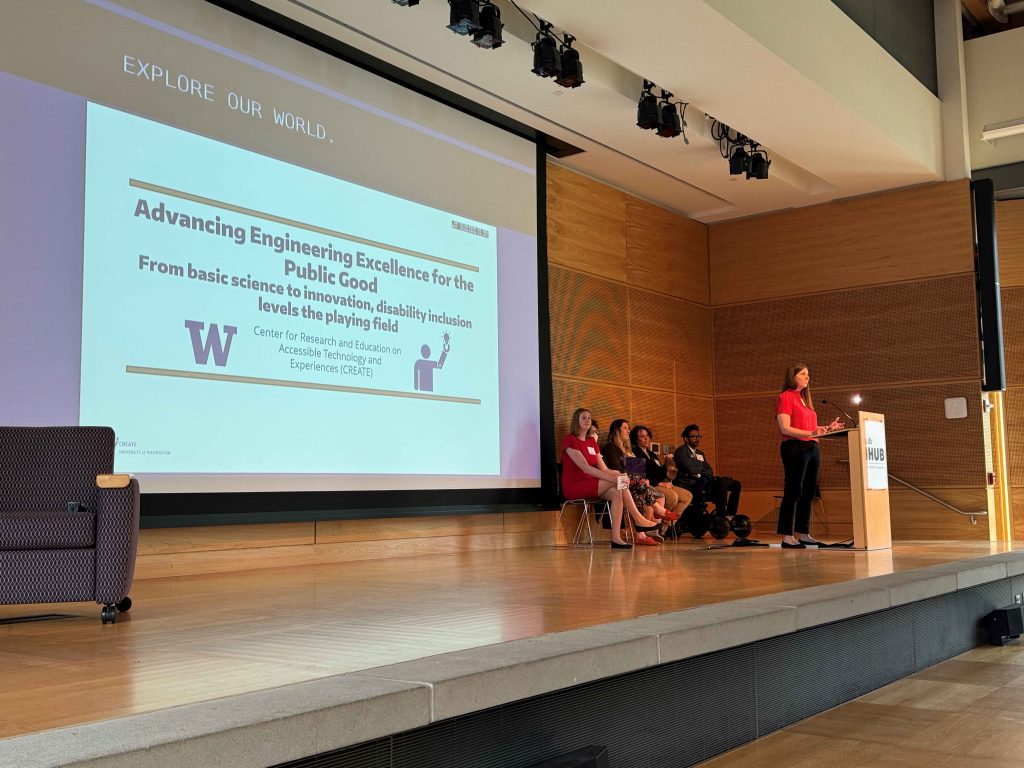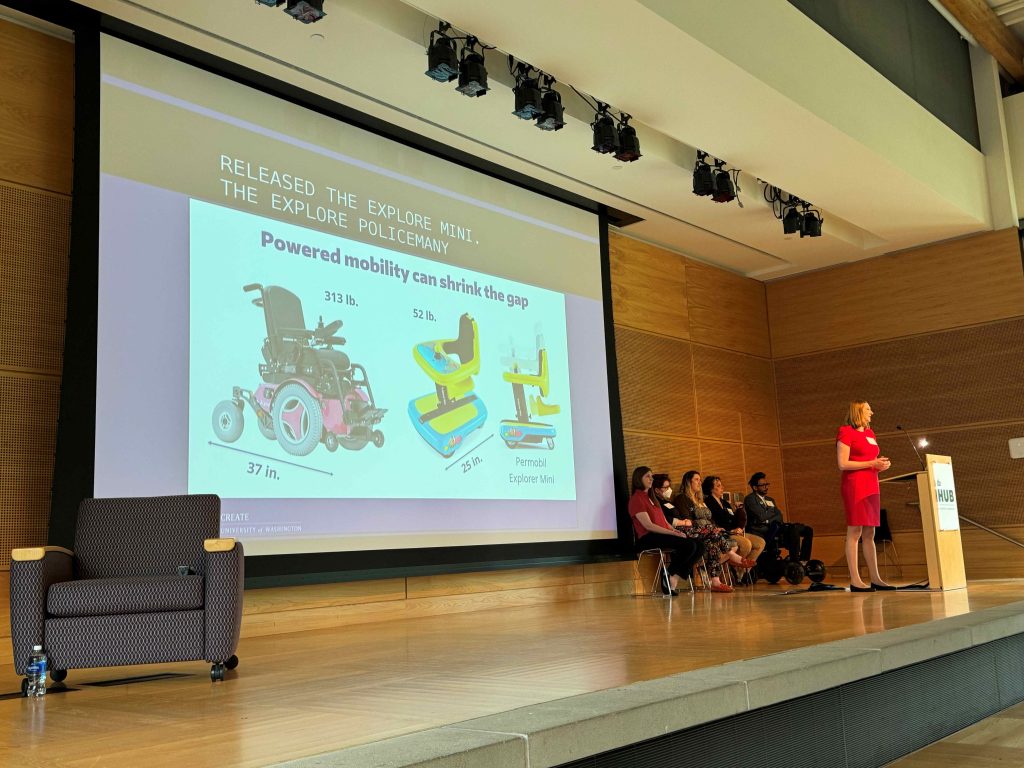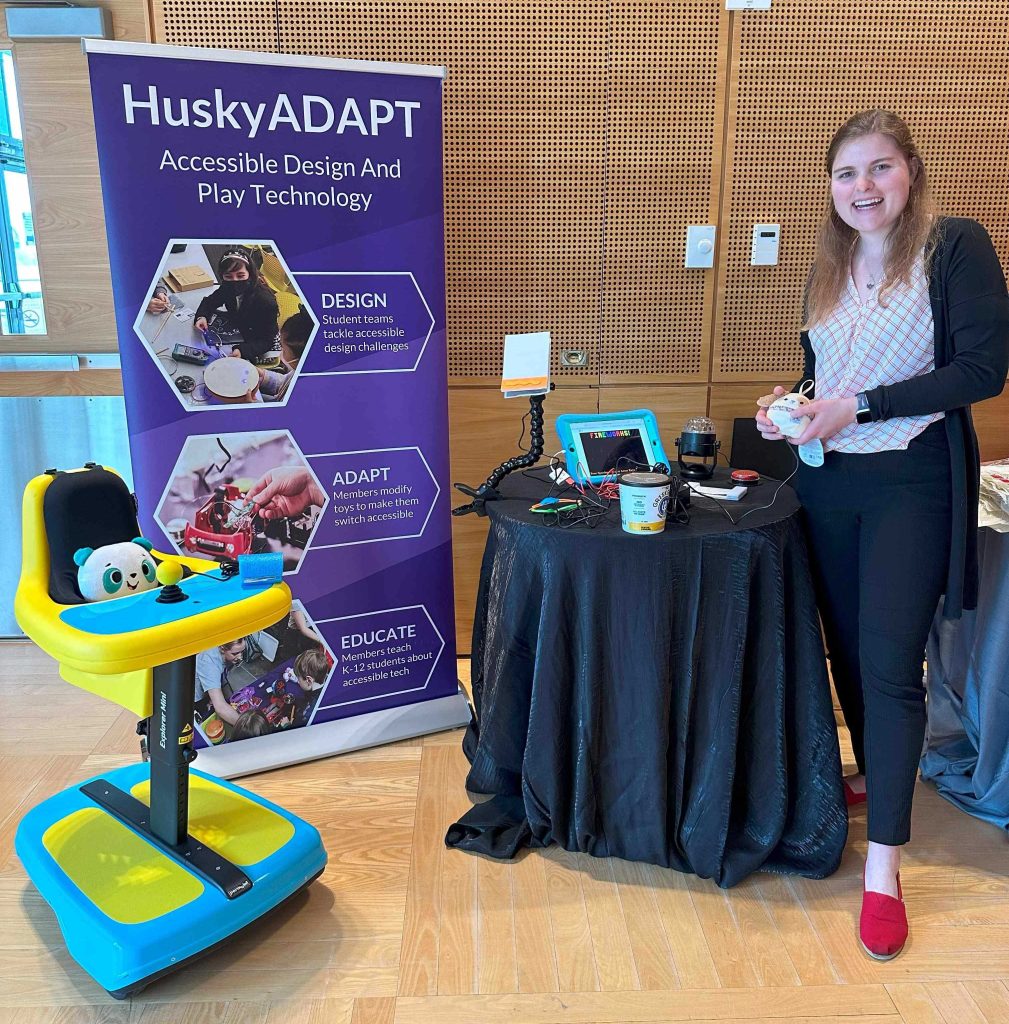This summer, the Steele Lab hosted undergraduate researcher, Riley Bernas, from the University of Connecticut. Riley was mentored by Mia Hoffman, Heather Feldner, and Kat Steele.
She finished up her 10-week summer Research Experience for Undergraduate (REU) by presenting at the 2024 Summer Undergraduate Research Symposium with the Center for Neurotechnology (CNT).
Riley gave a podium and poster presentation titled “Quantifying low-cost switch access play-kit usage in clinical settings: A first glance.“
Way to go, Riley!

